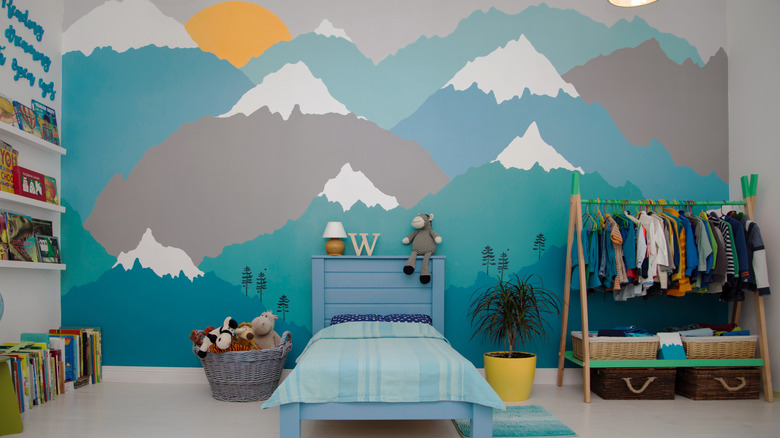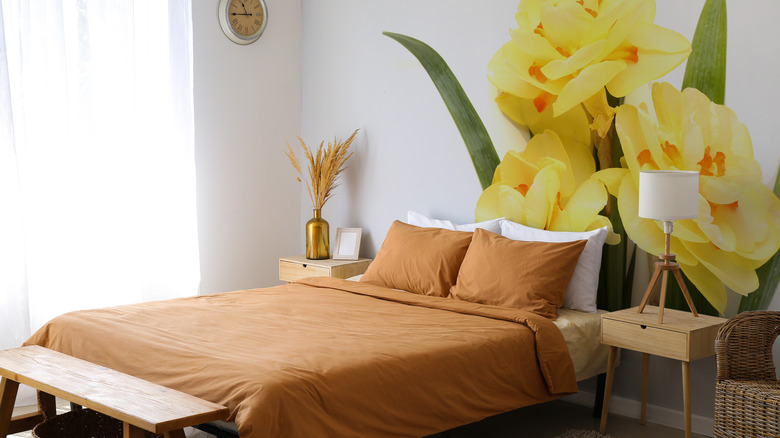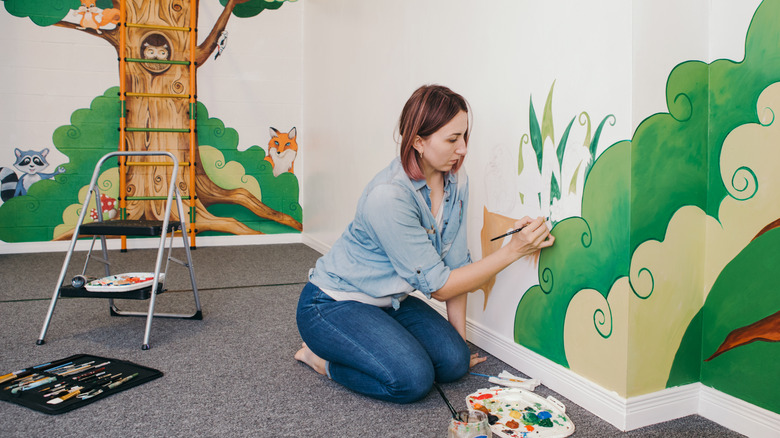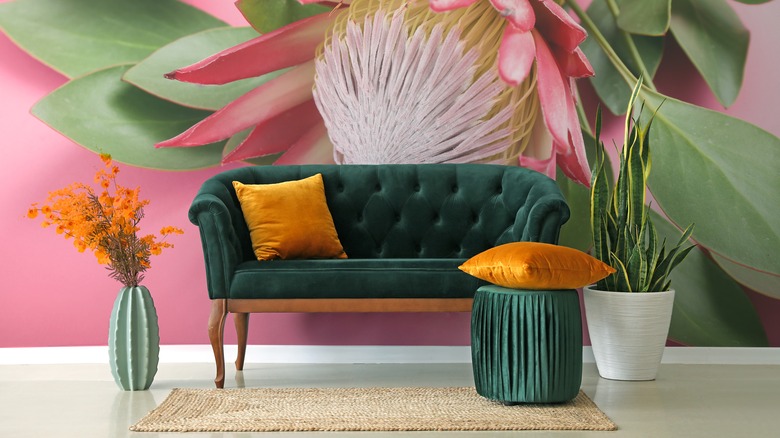What You Should Know Before Painting A Mural In Your Home
Are you thinking about painting a mural in your home? If so, you're not alone. Many homeowners are turning to murals to add color, character, and personality to their spaces. Racheal Jackson, a professional muralist, told Food52, "I love murals because they're so versatile." She continues, "Need a focal point in a space? Mural. Need something to balance out a wall? Mural. Feel like your space needs a pop of freshness? Mural. They're the strongest tool in my arsenal when I'm problem-solving." Painting a mural can be both an exciting and rewarding experience if done correctly; however, certain steps must be taken first for everything to go smoothly and look its best over time.
The first step is deciding on the right design for your mural. There are countless options available these days — from traditional scenes to abstract patterns — so take some time to explore different options until you find something that resonates with you. It may also be helpful to determine the size of your wall beforehand, as this will help narrow down your design choices. You may consider hiring an artist or graphic designer specializing in murals if you can't find a DIY option that meets your needs. Before you pick up a brush, there are some more critical factors to consider. This article will cover the essential steps for planning and executing your perfect mural, from prepping the wall to finding the right supplies.
Getting ready to paint
The first step in painting any mural is choosing the right paint. Selecting a type of paint specifically designed for interior walls is essential to ensure that it adheres properly and won't cause any damage. Additionally, look for colors with low VOC ratings so that they don't release dangerous toxins into the air while you're working. Next, it's time to gather the rest of your supplies — you'll need more than just paint. Before starting your project, make sure you have everything ready and organized. This includes drop cloths for protecting floors and furniture, painter's tape for creating clean lines, and brushes of various sizes and shapes, with some tiny ones for detailed areas, according to Skillshare. You'll also need sponges for blending colors, sealed containers to prevent spills, and a ladder, if necessary.
Now it's time to prep the wall for painting. First, you should make sure the wall is clean and free of dust or debris by wiping it down with a damp cloth or using a vacuum cleaner with an upholstery attachment. You may also want to sand down any imperfections or bumps in the wall so that they don't interfere with your design or disrupt its smoothness once painted over. Then apply primer and let it dry completely before moving on to painting. It may also be helpful to use painter's tape around the edges of the wall if necessary to ensure clean lines around your mural's perimeter.
Creating the mural's design
Take some time to consider which wall would best suit your mural. If you want something visible from multiple rooms or angles, choose an open wall with lots of space. It will also help to select a relatively smooth wall. Sketching out some ideas for the mural beforehand helps ensure that everything goes smoothly during the painting process and gives you plenty of room for creativity and experimentation without worrying about making mistakes. Art Is Fun recommends using a template or stencil to ensure that your lines are even and consistent throughout the entire mural. In addition, this also helps ensure that any intricate details are precise and accurate, which can be hard to do if you're drawing freehand.
Another benefit of using stencils and templates is that they can help reduce painting time. Using pre-made templates means you don't have to spend hours drawing out each element of your mural — you just need to trace it onto the wall with paint. Stencils or templates can be incredibly helpful when creating complex shapes for your murals, such as animals or other figures. By printing out a large-scale version of your desired shape, you can easily trace it onto your wall with paint. If possible, try prepping some elements ahead of time, such as stencils or templates, so they can help simplify the painting process.
The disadvantages of painting a mural in your home
Painting a mural in your home can be a creative and fun way to show off your artistic style and individuality. Still, some potential disadvantages should be considered before committing. To start, mural painting is labor-intensive work that requires considerable skill and craftsmanship to do correctly. It's possible to hire a professional artist or muralist specializing in this profession, but this can be very costly. In addition to cost considerations, murals can also cause damage to walls due to improper technique or the use of inferior materials. If done improperly, a mural can leave behind residue that cannot be removed without damaging the wall itself.
Not to mention, painting a mural is a significant commitment to a specific look. It will likely dominate the space aesthetically and may take away from other design elements in the room. If you eventually choose to sell your home, you may need to paint over the mural to entice prospective buyers.



